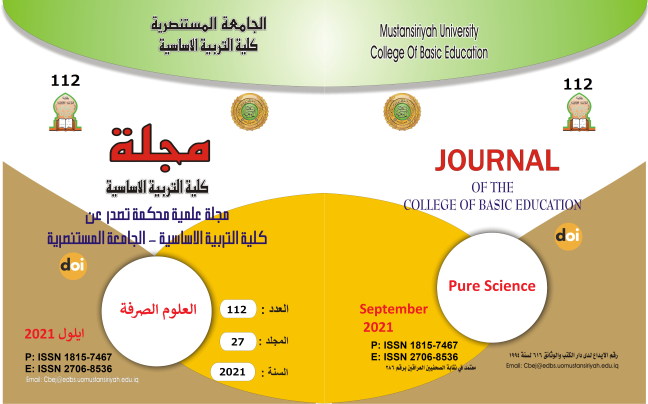Creative solutions to Therese's theory of transforming the shape of the environment's materials aesthetically
Main Article Content
Abstract
The topic was chosen because of the weakness in the ideas of the students, and the method of employing environmental materials in aesthetic works, as the goal of the research to: know the creative solutions of the theory of Therese in transforming the shape of the materials of the environment aesthetically. In the case of these creative solutions, the researcher has two hypotheses:
1 -There are no statistically significant differences between the average grades of students of both experimental groups and the control of the distance skill test.
2- There are no statistically significant differences between the grades of male and female experimental group students on the distance skill test.
The research community of (423015) pupils in primary, and selected a random sample consisted of (80) male and female pupils in the fifth grade of primary, as prepared the researcher (4) lessons according to the theory of Therese, based on the form of note creative solutions prepared by the researcher and consisted of (10) paragraphs, which obtained honesty and fortitude, and used the researcher statistical bag (spss) in the results and as follows:
1- To check the stability of the search tool, use the Holsti equation. 2. Cooper's equation of the sincerity of the instrument. 3. T-test for two independent samples (t,test), for the experimental and control research groups in: Equivalence by time age calculated in months, parity in creative thinking, to verify the first hypothesis. 4. Use the Man Whitney test to verify the second hypothesis. The most important conclusions: to introduce new and distinct solutions to the aesthetic problems and find more than one solution through the use of more than one raw in skilled tests, as well as teamwork generated many creative ideas. The most important recommendations: 1- Adopting therese theory strategies in teaching technical education to the primary level. 2- Conducting training courses in coordination between educational supervision, preparation and in-service training for technical education teachers to benefit from Therese's theory and strategies.
Article Details

This work is licensed under a Creative Commons Attribution-ShareAlike 4.0 International License.
